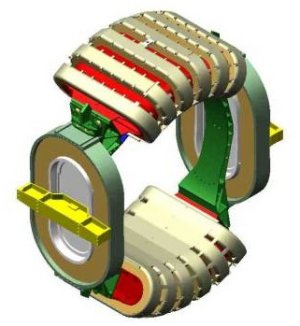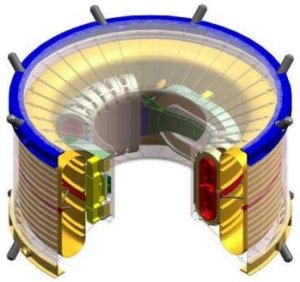The AMS Superconducting Magnet



There's a lot of technology that keeps the helium as cool as possible in space: vapor cooled shields, multilayer insulation, mechanical refrigeration pumps. All of this technology, however, is useless in the atmosphere; if our superfluid helium tank had to sit in the warm Florida atmosphere while we filled it up, since the helium is so cold, the air itself would freeze and stick to the outside of the tank, no matter how much insulation you wrapped around it. The only insulator for liquid helium, the only thing that will let it stay cold in warm surroundings, is a vacuum. So we have surrounded the entire helium/magnet system with a huge vacuum case. This case, since it's rather big and stiff, has become part of the support structure.